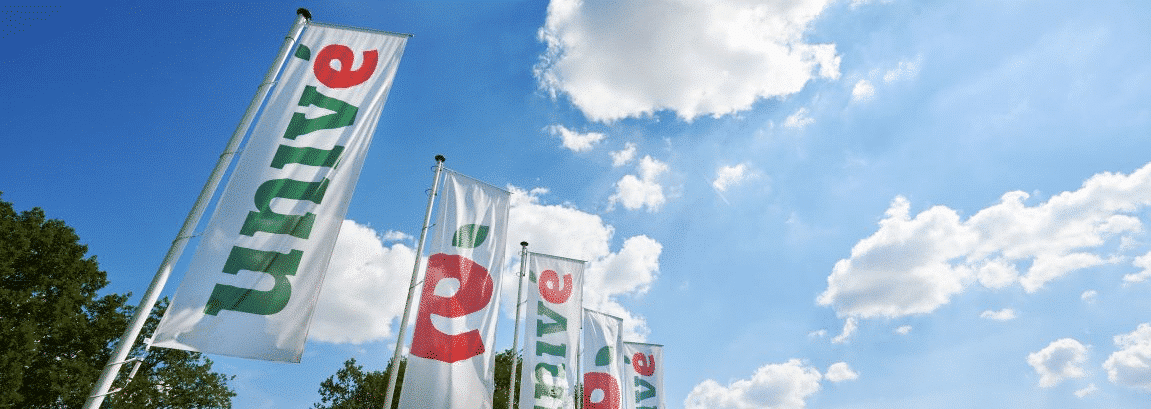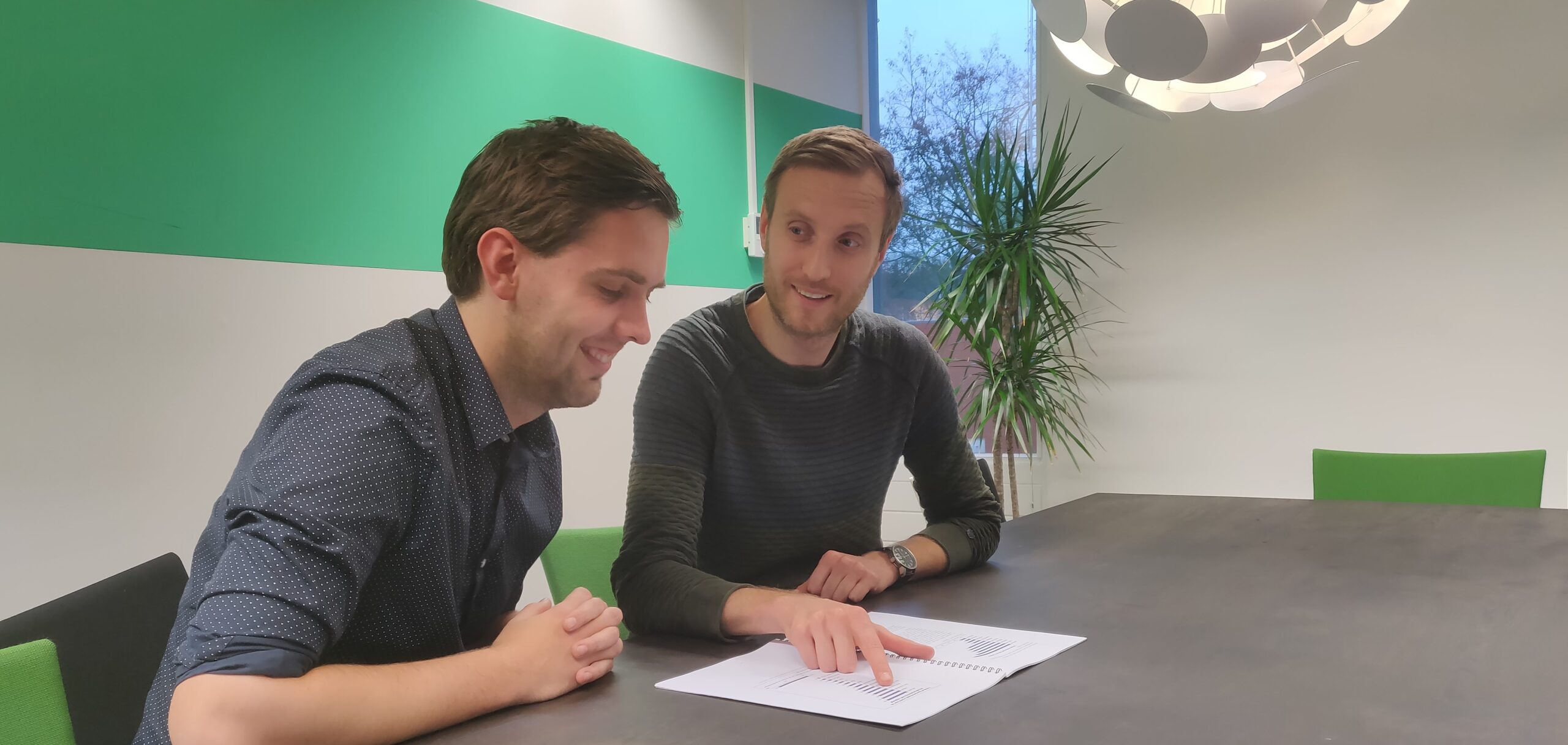How Univé’s customers reap the benefits of chatbots

Univé is a major player in the Dutch insurance landscape. With 110 stores and 2,700 employees, Univé serves more than 1.6 million insured parties. In recent years, Univé has developed into a security brand that focuses on “preventing, limiting and insuring” and, to that end, is further committed to improving online customer service (webcare).
In the summer of 2019, Univé implemented a chatbot to help control the growing number of questions, and to be available to customers outside of opening hours. In this interview, Customer Experience advisors Ties van der A and Mathijs Jilderda, share their experience with this, and their findings.
Chatbots as a solution for ever-increasing WhatsApp traffic
The Customer Experience team of Univé has the important task of providing effective customer contact and helping customers with less complex customer questions via the digital route. In this way, the organisation can offer insured persons a personal customer experience.
The number of customer questions on WhatsApp has increased enormously over the past year. Ties and Mathijs were looking for a way to control the growing volumes on WhatsApp and to be accessible outside opening hours. A chatbot offers the possibility to respond quickly, and to the right channel.
In order to be able to properly map out what a chatbot could deliver for Univé, the analysts from Spotler Engage carried out a feasibility report. This feasibility analysis outlines how chatbot technology can contribute to manageable customer volumes on WhatsApp, as well as a faster service time. Ties explains:
“At Univé, we think it’s important to communicate quickly, and in the right way, with our customers. The chatbot therefore fits well within our customer contact goals and values, for example, by being available at all times. Our WhatsApp and social media channels are integrated into the online customer service environment of Spotler Engage. The integration of a chatbot was a logical next step in optimising our service.”

Chatbot feasibility analysis and implementation
Before implementing the chatbot, Univé wanted to investigate in order to get a better understanding as to how many questions the chatbot could answer. The team chose to have a feasibility analysis carried out. The chatbot feasibility report is a tailor-made analysis that provides insight into what a chatbot can deliver for an organisation. The analysis showed that the chatbot can answer an estimated 12.8% of the number of messages and that a bot can provide faster response times (also outside opening hours). Mathijs explains:
“The report gives us a nice and clear numerical overview and explains in a very concise way what the benefits of a chatbot are for us. Thanks to the analysis we also gained insight into the number of messages that a chatbot can take care of and which questions are suitable for the chatbot.”
A timetable for the implementation of the chatbot was determined in advance with the team. Together with the experts from Spotler Engage, Mathijs and Ties coordinated the flows and completely wrote out the conversations. The bot was set up in a test environment, where customer advisers trained the chatbot with customer questions from the past. By collecting and bundling customer questions together, they were able to find out which questions were asked most often and how the customer asked them.
“We tested whether the chatbot responded in the desired way and made our adjustments accordingly, based on this. Then we put the bot live in the test environment. We noticed that we still had to train the bot further in that first period, because it’s just not possible to immediately have a ready-made answer to all possible questions. After the – relatively short – test period, the chatbot was completely ready for implementation, and chatbot ‘Vera’ was born! It was great that the implementation went so smoothly.”
The entire process took two and a half months all together. From writing out the flow and testing by advisors to the real go-live.
Response time down on WhatsApp and other channels
In terms of service level, the response time of Univé on WhatsApp and other channels is set at one hour. Due to an increase in volumes on all channels, it was a challenge to reach this service level. Since the chatbot was introduced, the average response time has been considerably reduced. After the first few months, Mathijs already sees that the prediction from the feasibility report regarding the number of messages that a chatbot picks up is quite accurate — to the nearest decimal point. After four months indeed 12.8 percent of all messages were handled by the chatbot!
Mathijs explains that in this first year he mainly wants to learn from the chatbot and not look so much at the figures just yet. In addition, the data is qualitative, which means that it is not possible to turn it into a business case. Not all benefits can be expressed in figures. “For example, we know quantitatively that 15 percent of all chatbot messages are picked up outside opening hours. But what that means for our customers is, for the time being, difficult to express in value,” says Mathijs.
NPS scores remained the same
The Customer Experience team actively measured customer satisfaction in the months following the chatbot implementation and compared the results with their pre-implementation discussions. What did they notice? That the NPS scores remained the same in conversations with, and without, a chatbot.
Ties explains that the customer is always aware of the fact that the chatbot is still in training when a conversation starts. This creates the expectation for the customer that a conversation can be carried out a bit differently than expected. In addition, an employee is always linked to the chatbot so the conversation can be taken over by an employee at any time.
The general murmerings among the service team are very positive. Before the team started with the chatbot, the service employees were asking regularly for a solution to answering standard questions. The team is now relieved of that work. The chatbot is used for performing a lot of the preliminary work, for example, asking for any specific information that may be used to help the customer right away, which ultimately leaves more room for the service employees to deal with the content of the more complex questions.
A chatbot isn’t rocket science
If you look at what a chatbot is all doing within Univé, it’s not rocket science. It mainly requests data. Yet that alone has an impact on both the team as well as customer satisfaction. The big advantage for Univé is that the answering/handling of many questions can be automised. Ties therefore gives the tip to start small and learn from that:
“Focus on the questions with a lot of volume, such as processing a proof of warranty. Then use these insights to optimise your online customer service and further develop it”.
A practical tip that Ties and Mathijs also want to give: “Throughout the integration of a chatbot, it works well to consider it as an employee. You can do this by giving your chatbot a name. Univé calls her chatbot Vera. The transition from chatbot to a live conversation with an employee must also always be clear to the customer. This way the customer always knows what he or she can expect.”